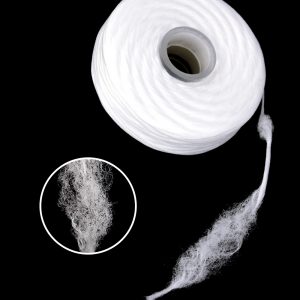In the realm of oral health, where every smile counts, dental floss emerges as a steadfast ally in our pursuit of a healthier mouth. Let’s take a closer look at why flossing is so crucial, and how it can make a world of difference in our daily dental routine.
Understanding the Basics
Dental floss is like the unsung hero of oral hygiene. It’s a thin, flexible thread that slips between our teeth, reaching those tight spaces where our toothbrush can’t quite reach. Whether it’s waxed or unwaxed, flavored or plain, dental floss works silently but effectively to remove plaque and food particles, keeping our teeth and gums clean and healthy.
Waxed vs. Unwaxed Dental Floss
One of the first choices you’ll encounter when selecting dental floss is whether to go for waxed or unwaxed. Waxed dental floss is coated with a thin layer of wax, which makes it glide more easily between teeth, especially those with tight spaces or rough surfaces. This can be particularly helpful for people with crowded teeth or dental work like braces or bridges. On the other hand, unwaxed dental floss is made of plain, uncoated nylon or Teflon, offering a more textured surface for a thorough clean. While some people prefer the smoother feel of waxed floss, others find that unwaxed floss provides a better grip for removing stubborn plaque.
The Benefits of Waxed Dental Floss
Waxed dental floss is prized for its smooth glide, making it ideal for people with closely spaced teeth or dental work that may snag on unwaxed floss. The wax coating helps the floss slide more easily between teeth, reducing the risk of shredding or fraying. Additionally, the slight stickiness of the wax can help the floss adhere to plaque and debris, ensuring a more thorough clean with each pass. Waxed floss is available in a variety of flavors, from mint to cinnamon, making it a more pleasant experience for those who dislike the taste or sensation of unwaxed floss.
The Benefits of Unwaxed Dental Floss
Unwaxed dental floss, on the other hand, offers a more textured surface for removing plaque and debris from between teeth. Without the slick coating of wax, unwaxed floss may provide a better grip, allowing for more effective cleaning, especially in hard-to-reach areas. Some people also prefer the natural feel of unwaxed floss, free from any added coatings or flavors. Additionally, unwaxed floss tends to be thinner than its waxed counterpart, making it easier to maneuver between tightly spaced teeth or around dental appliances.
Introducing Fluffy Floss: A Wider Cleaning Experience
Beyond waxed and unwaxed dental floss, there’s another option to consider: fluffy floss, also known as dental tape. Fluffy floss is wider and flatter than traditional floss, offering a broader surface area for cleaning between teeth. This can be particularly beneficial for people with larger gaps between their teeth or those who find traditional floss too thin. Fluffy floss glides smoothly between teeth, removing plaque and debris without shredding or fraying.
Choosing the Right Floss for You
Ultimately, the choice between waxed, unwaxed, and fluffy dental floss comes down to personal preference and individual oral care needs. Some people may find that waxed floss glides more smoothly and comfortably between their teeth, while others prefer the texture and grip of unwaxed or fluffy floss. Experimenting with different types of floss can help you determine which one works best for your unique smile. Remember, the most important thing is to floss regularly, regardless of which type of floss you choose. By making flossing a daily habit, you’ll be taking proactive steps to protect your oral health and keep your smile shining bright.
Incorporating Flossing into Your Routine
Now that we’ve explored the world of dental floss, it’s time to incorporate flossing into your daily routine. Make it a habit to floss at least once a day, preferably before brushing your teeth. Take your time and be gentle, using a back-and-forth motion to clean between each tooth and along the gumline. Don’t forget to floss behind your back teeth as well, where plaque and food particles can easily accumulate. And if you’re not sure which type of floss is right for you, don’t hesitate to ask your dentist or dental hygienist for recommendations.
Conclusion
In conclusion, dental floss is a simple yet powerful tool for maintaining optimal oral hygiene. Whether you prefer the smooth glide of waxed floss, the textured feel of unwaxed floss, or the broader cleaning surface of fluffy floss, incorporating flossing into your daily routine is essential for keeping your teeth and gums healthy. So, the next time you reach for your toothbrush, don’t forget to grab that spool of dental floss too. Your smile will thank you for it!



